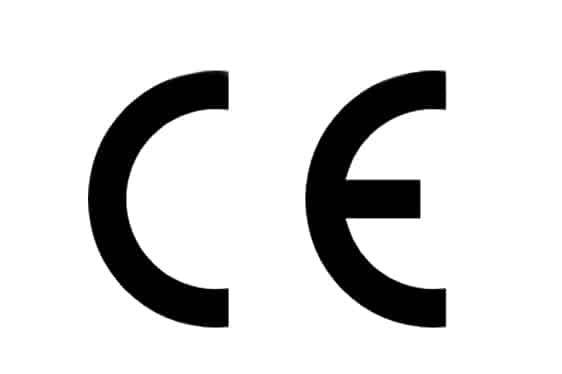microsilicium is widely used in the fields of construction, chemical and refractory industries. Since microsilica has strong volcanic ash activity, strong water secretion, small particle size and large specific surface area, enz., it can be mixed in concrete to improve the durability of concrete. Dus, what is the effect of microsilica on the durability of concrete?
Impermeability
On the concrete material itself, the ability to resist the permeability of various media depends mainly on its internal pore structure and interface properties, of which the higher the volume ratio of harmful pores to the total pores, the more unfavorable to media permeability. For ordinary concrete, when the water-cement ratio exceeds 0.6, the permeability of concrete grows sharply, while for the water-cement ratio of less than 0.4 concreet, it can be considered basically impermeable. For high-performance concrete mixed with a certain amount of microsilica, the water-cement ratio is usually less than 0.4 and filled with ultra-fine particles, so the high-performance concrete mixed with microsilica has a very good impermeability. Because of the small particles of microsilica, 20 tot 100 times smaller than the cement particles, can fill the gaps in the middle of the cement particles, so that the concrete is dense, while the secondary hydration of microsilica, the new generation of blocking the permeation channels in the concrete, so the microsilica concrete has a very good impermeability.
Chemical erosion resistance
The addition of microsilica can significantly reduce the permeability of concrete and reduce the free Ca (OH) 2, thereby improving the ability of concrete to resist chemical erosion. Incorporating microsilica in concrete can reduce Ca(OH)2 inhoud, increase concrete compactness and effectively improve weak acid corrosion ability. In aanvulling, it can also resist salt corrosion, especially for chloride salts and sulfates, the reason why it can resist acid and salt erosion, the reason is that microsilica concrete is denser, the pore structure is improved, thus reducing the rate of transfer of harmful ions, reducing the generation of soluble Ca(OH)2 and calcium alumina.
Anti alkali aggregate reaction
Alkali aggregate reaction must have three conditions: the aggregate in the concrete is active; het beton bevat een bepaalde hoeveelheid oplosbare alkali; er is een bepaalde hoeveelheid vochtigheid. Het uitsluiten van een van deze drie voorwaarden kan het doel van het beheersen van de alkali-aggregaatreactie bereiken. De toevoeging van microsilica in beton, because the microsilica particles improve the compactness of cementitious materials, het verminderen van de bewegingssnelheid van water door de slurry, het maken van de expansiereactie van het alkali-aggregaat vereist minder water, maar ook vanwege het verminderen van de concentratie van alkali-ionen in de porievloeistof van de cementslurrie, daarom, vermindering van het risico van alkali-aggregaatreactie.
Weerstand tegen wapeningscorrosie
De hoge alkaliteit van beton zorgt voor de vorming van een passiveringsfilm voor de wapening in gewoon gewapend beton. Zodra de passiveringsfilm is vernietigd, elektrochemische corrosie van de wapening optreedt, en de snelheid van corrosie hangt af van de snelheid van vocht en zuurstof die het beton binnendringen. The addition of microsilica improves the compactness of the concrete increasing the resistivity, so the resistance to reinforcement corrosion is greatly improved. Microsilica improves the resistivity is increased with the increase of microsilica content.
Abrasion resistance
The addition of microsilica improves the anti-abrasive properties of concrete is due to the improvement of the slurry’s own anti-abrasive properties and hardness, as well as improve the bonding of cement paste aggregate interface, zodat het grove aggregaat moeilijk te eroderen is wanneer het wordt onderworpen aan schurende werking. Met microsilica gedoteerd anti-schurend beton zonder met microsilica gedoteerd beton kan in vergelijking met het algemene anti-schurende vermogen met ongeveer worden verhoogd 1 keer, het anti-cavitatievermogen kan met meer dan worden verhoogd 3 keer. Het algemene anti-cavitatievermogen om de vermenigvuldiger te verbeteren is groter dan het anti-ponsvermogen om de vermenigvuldiger te verbeteren. De opbrengst van microsilica wordt over het algemeen genomen 8% tot 10% is gepast, wanneer de microsilica concrete anti-slijtage.
Vorstbestendigheid
De toevoeging van microsilica in het beton kan ook de vorstbestendigheid van beton effectief verbeteren. Microsilica beton na 300 tot 500 snelle vries-dooicycli, de relatieve dynamische elasticiteitsmodulus verminderd met 1-2%, terwijl gewoon beton er alleen doorheen gaat 25 tot 50 cycli, de relatieve dynamische elasticiteitsmodulus verminderd met 36% tot 73%.





